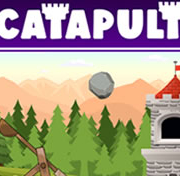Nicolaus Copernicus Facts, Science Game
This game will help children learn key facts about Nicolaus Copernicus. So, who was Nicolaus Copernicus? He was a Polish-born mathematician and astronomer who argued that the planets orbit the sun and not the other way around – called the heliocentric system or sun-centered system. He was also one of the first to argue that the Earth rotates on its axis. These facts turned out to be true and have since advanced our understanding of the solar system. Play this game to learn more about Nicolaus Copernicus.
Nicolaus Copernicus Facts
If you have ever wondered who Nicolaus Copernicus was, you've come to the right place. A Renaissance Catholic mathematician, astronomer, artist, diplomat, and theorist, he changed our understanding of the universe. Learn about this fascinating Renaissance Catholic by reading the facts below. Whether you're interested in his work as an astronomer, mathematician, or artist, this article will help you understand the man behind the theories of planetary motion.
Nicolaus Copernicus was a Renaissance Catholic mathematician
Nicolaus Copernicus was born in Torun, Poland, to well-to-do merchants. He was educated at the University of Padua and the University of Ferrara and was ordained a canon at the church in 1496. Later, Copernicus became a canon at Frauenburg, an inland town in Ermland. In 1466, Poland annexed West Prussia. Torun was a free city under the Polish crown, and Copernicus was a subject of the new king.
Astronomer
The discovery that the earth revolves around the sun was a breakthrough in science. In his book, De Revolutionibus orbium coelestium, Nicolaus Copernicus argued that the earth was the center of the universe and that the planets and stars orbited it. His theory proved to be the first to refute the Geocentric Theory, which held that the Earth was the center of the universe.
Artist
Nicolaus Copernicus was born in Poland in 1473 and died in 1543. His portrait, which has remained unattributed to any one artist, is perhaps the most famous example of this type of painting. It depicts the astronomer kneeling in awe before the starry sky while standing on the roof of the Frombork Cathedral. During the partition, the two countries were at odds about who possessed Copernicus's image, but this painting strikes a chord with Polish people searching for national figureheads and nationalist symbols.
Diplomat
While living in Prussia, Diplomat Nicolaus Copernicus continued to study astronomy and mathematics in Krakow. He also studied Islamic and Greek astronomy. After studying in Krakow, Copernicus went to Italy where he studied law, medicine, and other subjects. While studying in Italy, Copernicus became fluent in Italian and learned the language of his country. He wrote a popular essay on coinage, which criticized the debasing of the currency and made recommendations to reform the system. He also served as a leader for West Prussia in wars against the Teutonic Knights.
Physician
Nicolaus Copernicus was a Polish astronomer and physician who was a nephew of the bishop of Frombork, a town on the Baltic Sea coast. He was appointed a canon of the cathedral in 1510 and served as its physician and secretary, all while practising medicine. He led a semi-religious life, engaging in astronomical observations from his apartment.
Translator
You may have heard of Nicolaus Copernicus, the scientist and mathematician who wrote a book called De revolutionibus orbium coelestium. While the title of this work is rather obscure, it explains Copernicus' famous hypothesis that the earth rotates around the sun. This theory influenced the development of astronomy and has become a central element of science. It's important to understand why Copernicus thought this way.
Mathematician
Nicolaus Copernicus is an important person in the history of mathematics. He is a brilliant and prolific mathematician, and is perhaps best known for his theory on heliocentrism. But his work on astronomy didn't end there. He continued to make observations, and even wrote a book titled Commentariolus about his work. His observations were limited, though, due to the poor viewing position of his monastery in Frombork, and his many other duties as a canon. In 1524, he wrote a letter titled "Letter against Werner" in response to Johann Werner's letter disputing his heliocentric theory.
Canonist
Nicolaus Copernicus is one of the most influential scientists of all time, and it's no wonder that he was canonized. He studied canon law in the city of Bologna in the 1490s, and later obtained a doctorate from the University of Ferrara. Although he never received orders to become a priest, he spent his free time studying astronomy and astronomical texts. According to the Encyclopedia Britannica, Copernicus believed that the Earth was the center of the universe and that the sun revolved around it.
Economist
Many people know Nicolaus Copernicus, but you may not know the facts behind his life. He was born into a family of four. His elder brothers Andreas and Antoninus became Augustinian canons in Frombork, and his younger sister Barbara was a Benedictine nun. Copernicus' mother died soon after he was born, and his mother was buried. His mother, Katharina, looked after her five children while her mother died.










